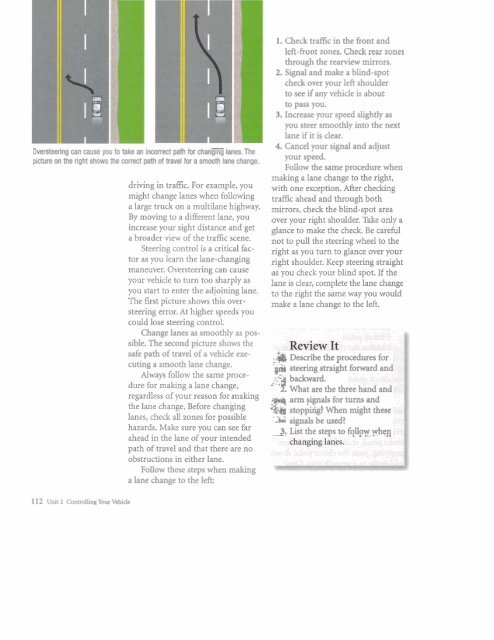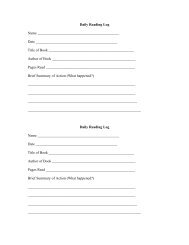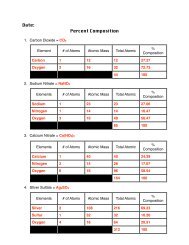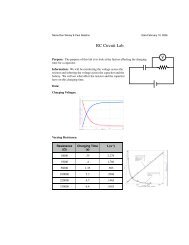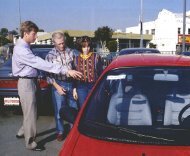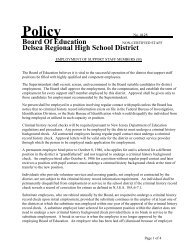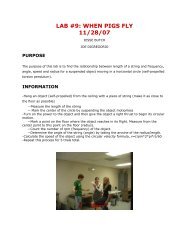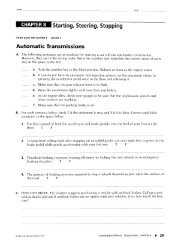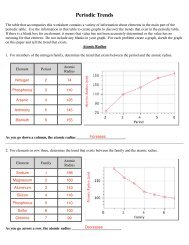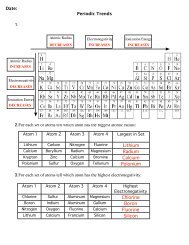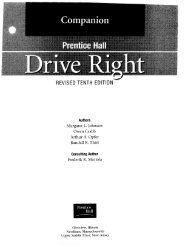Chapter 6 Performing Basic Vehicle Maneuvers
Chapter 6 Performing Basic Vehicle Maneuvers
Chapter 6 Performing Basic Vehicle Maneuvers
You also want an ePaper? Increase the reach of your titles
YUMPU automatically turns print PDFs into web optimized ePapers that Google loves.
Oversteering can cause you to take an incorrect path for changing lanes. The<br />
picture on the right shows the correct path of travel for a smooth lane change.<br />
1 12 Unit 2 Controlling Your <strong>Vehicle</strong><br />
driving in traffic. For example, you<br />
might change lanes when following<br />
a large truck on a multilane highway.<br />
By moving to a different lane, you<br />
increase your sight distance and get<br />
a broader view of the traffic scene.<br />
Steering control is a critical factor<br />
as you learn the lane-changing<br />
maneuver. Oversteering can cause<br />
your vehicle to turn too sharply as<br />
you start to enter the adjoining lane.<br />
The first picture shows this oversteering<br />
error. At higher speeds you<br />
could lose steering control.<br />
Change lanes 2 smoothly as possible.<br />
The second picture shows the<br />
safe path of travel of a vehicle executing<br />
a smooth lane change.<br />
Always follow the same procedure<br />
for making a lane change,<br />
regardless of your reason for making<br />
the lane change. Before chanbing<br />
lanes, check all zones for possible<br />
hazards. Make sure you can see far<br />
ahead in the lane of your intended<br />
path of travel and that there are no<br />
obstructions in either lane.<br />
Follow these steps when making<br />
a lane change to the left:<br />
1. Check traffic in the front and<br />
left-front zones. Check rear zones<br />
through the rearview mirrors.<br />
2. Signal and make a blind-spot<br />
check over your left shoulder<br />
to see if any vehicle is about<br />
to pass you.<br />
3. Increase you speed slightly as<br />
you steer smoothly into the next<br />
lane if it is clear.<br />
4. Cancel your signal and adjust<br />
your speed.<br />
Follow the same procedure when<br />
making a lane change to the right,<br />
with one exception. After checking<br />
traffic ahead and through both<br />
mirrors, check the blind-spot area<br />
over your right shoulder. Take only a<br />
glance to make the check. Be careful<br />
not to pull the steering wheel to the<br />
right as you turn to glance over your<br />
right shoulder. Keep steering straight<br />
as you check your blind spot. If the<br />
lane is clear, complete the lane change<br />
to the right the same way you would<br />
make a lane change to the left.<br />
. ,& Describe the procedures for.<br />
-. ,<br />
'I& steering straight forward and<br />
-l5 backward.<br />
!-.-a<br />
2. What are the three hand and<br />
;m arm signals for turns and<br />
"$!& stopphigt When might these<br />
'A4 signals be used?<br />
3, List the steps to follow when<br />
--


